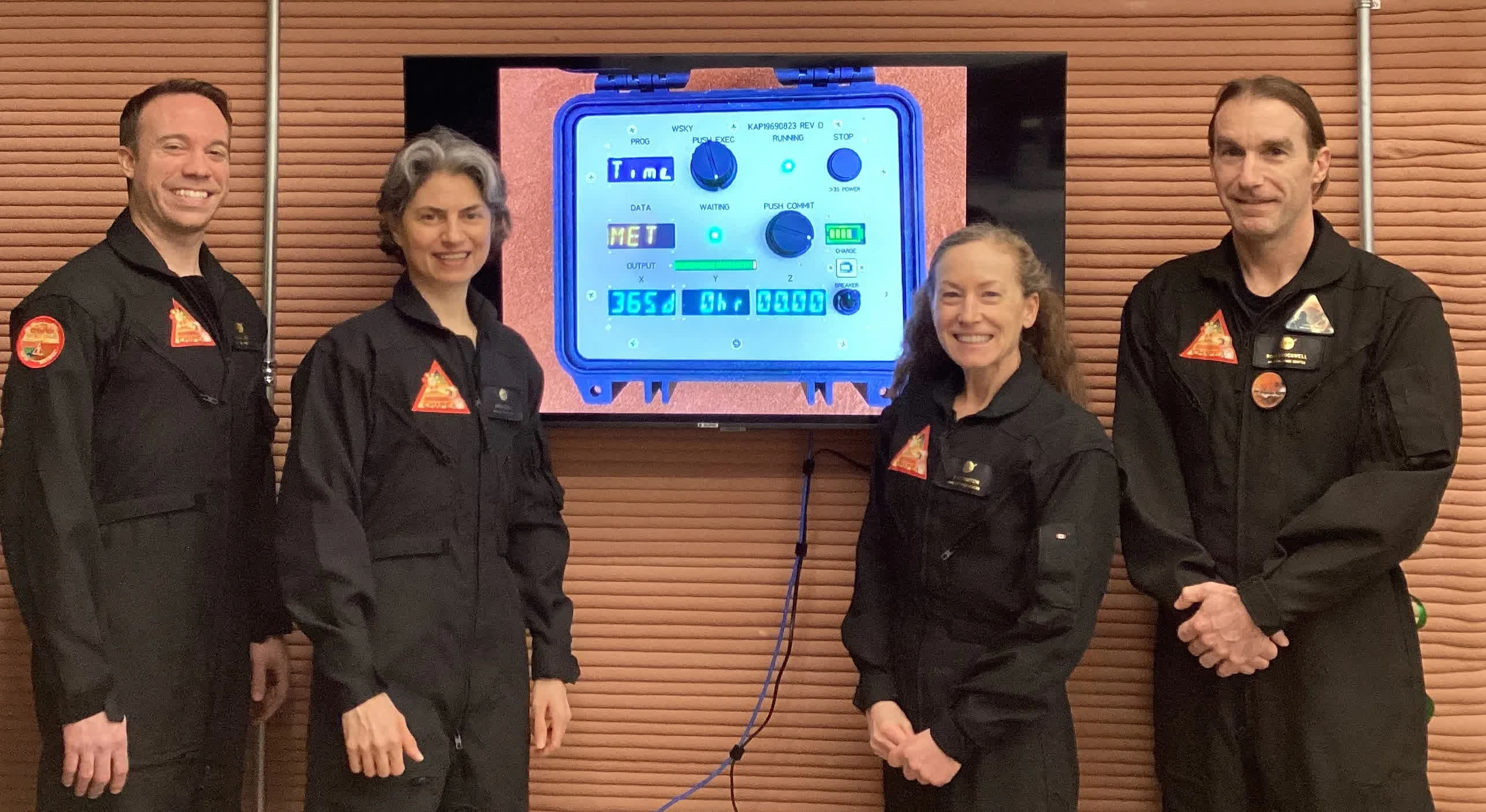Space Odyssey: NASA plans to send the first crewed mission to Mars sometime in the 2030s. Although it will be an orbit-and-return mission, eventually, the space agency wants boots on the ground. Four intrepid explorers just completed one of a series of feasibility studies by living in a space outpost lookalike for a year.

After spending 378 days in almost complete isolation in a simulated Mars environment, the first CHAPEA (Crew Health and Performance Exploration Analog) mission crew exited the Mars Dune Alpha building this Saturday. The four volunteers spent more than a year doing simulated "Marswalks" and growing vegetables, providing NASA with a valuable research opportunity to prepare for future Mars exploration.
The CHAPEA mission began on June 25, 2023, when crew members Kelly Haston, Anca Selariu, Ross Brockwell, and Nathan Jones entered a 3D-printed 1,700-square-foot habitat at NASA's Johnson Space Center in Houston, Texas. The CHAPEA program includes a series of missions that realistically simulate conditions astronauts would have to endure in year-long landfall visits to Mars.
The CHAPEA crew had to conduct simulated "Marswalks" and engage in other physical activities so NASA could collect data on various factors, including behavioral health and performance. The crews living a year in Mars Dune Alpha also had to grow vegetables to supplant canned food and generally experience an estranged life with limited resources and delayed communications, like a real Mars landing mission.
After completing their mission, the CHAPEA 1 crew members expressed their gratitude for the opportunity to participate. Biomedical research scientist Kelly Haston, the mission commander, said the mission was fun and challenging.
"[CHAPEA was] a unique experience with great challenges, joys, and sorrows, and a lot of hard work with a fair bit of fun thrown in," Haston remarked.
Flight engineer Ross Brockwell highlighted how the simulated Mars mission was an opportunity to focus on optimizing resource utilization.
"This [was an] incredible opportunity," said Brockwell. "[It gave us] the chance to live the idea that we must utilize resources no faster than they can be replenished and produce wastes no faster than they can be processed back into resources."
Emergency medicine professor Nathan Jones, who acted as the crew's medical officer, said that despite the extended mission length, there was always something to do, so the time "went by quickly."
"[I'd like to thank] the American public for continuing to dare to dream that this humanity might go beyond Earth and our next giant leap forward," he said.
Microbiologist and US Navy officer Anca Selariu, the crew's science officer, expressed that CHAPEA 1 was a dream come true for her.
"[I was] astonished … that I got to contribute to the one thing that is dearest to my heart: bringing life to Mars," Selariu told reporters.
The CHAPEA crew wasn't alone in its simulated Mars experience. During the mission, Johnson Space Center Deputy Director Steve Koerner and four other NASA members acted as the earth-based control crew.
NASA has planned two additional CHAPEA missions over the next few years. In February, the space agency began looking for crew members for CHAPEA 2. If everything goes according to plan, a Mars exploration attempt could happen sometime in the next decade.
First NASA mission focused on simulated Mars habitat ends with crew alive and well